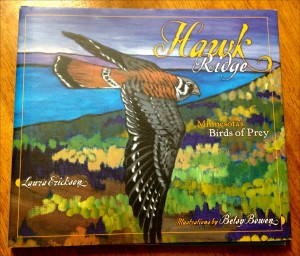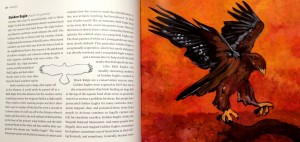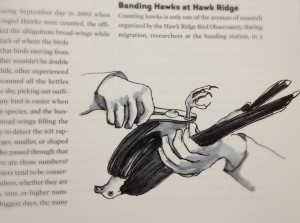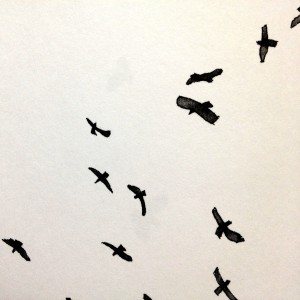Regional guides are invaluable assets to every birder’s library. For instance, if you plan to spend some time in Cape May, New Jersey, you would definitely want to have a copy of David Sibley’s “The Birds of Cape May”on hand; an annotated checklist with the status and distribution of all birds recorded at Cape May (as of 1997). As a holistic birder (something I’ll talk about more in my next review) you must always be cognizant of time and place in order to know what birds to expect. Enter the beautiful Hawk Ridge: Minnesota’s Birds of Prey by Laura Erickson and illustrated by Betsy Bowen.

Not meant as a pictorial identification guide, this is a regional descriptive guide to the raptors that pass through (or over) Minnesota’s Hawk Ridge each year. For each species Erickson provides you with engaging and pertinent natural history as well as the important migration timing and count data from Hawk Ridge. These both help you understand the species at a deeper level, and allow you to maximize your chances of seeing one along the shore of Lake Superior. Erickson’s writing is clear and familiar and her facts are solid. As any hawkwatcher will tell you, identification field marks often vary from location to location. Erickson addresses this by including site-specific identification tips that will help those visiting Hawk Ridge in predicting what species to see under particular conditions, and identifying that particular bird based on its behavior. For instance, with regards to Sharp-shinned Hawks she says:
“Since migration doesn’t limit their ability to hunt except in heavy rain, Sharp-shinned Hawks are more likely to fly over Hawk Ridge on east-west wind and drizzly days than other raptors. On perfect migration days when a good number of songbirds are also moving along the ridge, sharpies are usually seen a much closer range than most of the other species, taking advantage of the abundant prey.”
Accompanying Erickson’s text are the illustrations and paintings by Betsy Bowen. Without them Hawk Ridge would be an annotated checklist of the raptors of the Duluth area, but instead this book stands out as a beautiful tribute to the magnificent species described between its covers.

I’m not an art critic, but if I had to classify Bowen’s work in two words they would be bold and loose. For each species she provides a silhouette, the classic trademark of any hawkwatching literature.  My impression is that these are not meant for identification but rather just a common placeholder among the different species descriptions. Each species also gets a single full-page painting boldly colored and in many cases quite animated (such as the Golden Eagle above). Throughout the book Bowen provides smaller grayscale illustrations ranging from birds on nests to raptor banding to an exterminator pump spewing a cloud of DDT; all well-placed to illustrate a piece of Erickson’s writing.

As someone who has recently relocated to the Midwest, and who plans to visit Hawk Ridge several times this year, I’m grateful to Erickson for consolidating many years of information into this book. Beyond the text, I am really enjoying Bowen’s artwork and can see how these majestic birds of prey have left an impression on her; as they have for all of us who have spent any time, spring or fall, staring at the big blue sky in anticipation.
